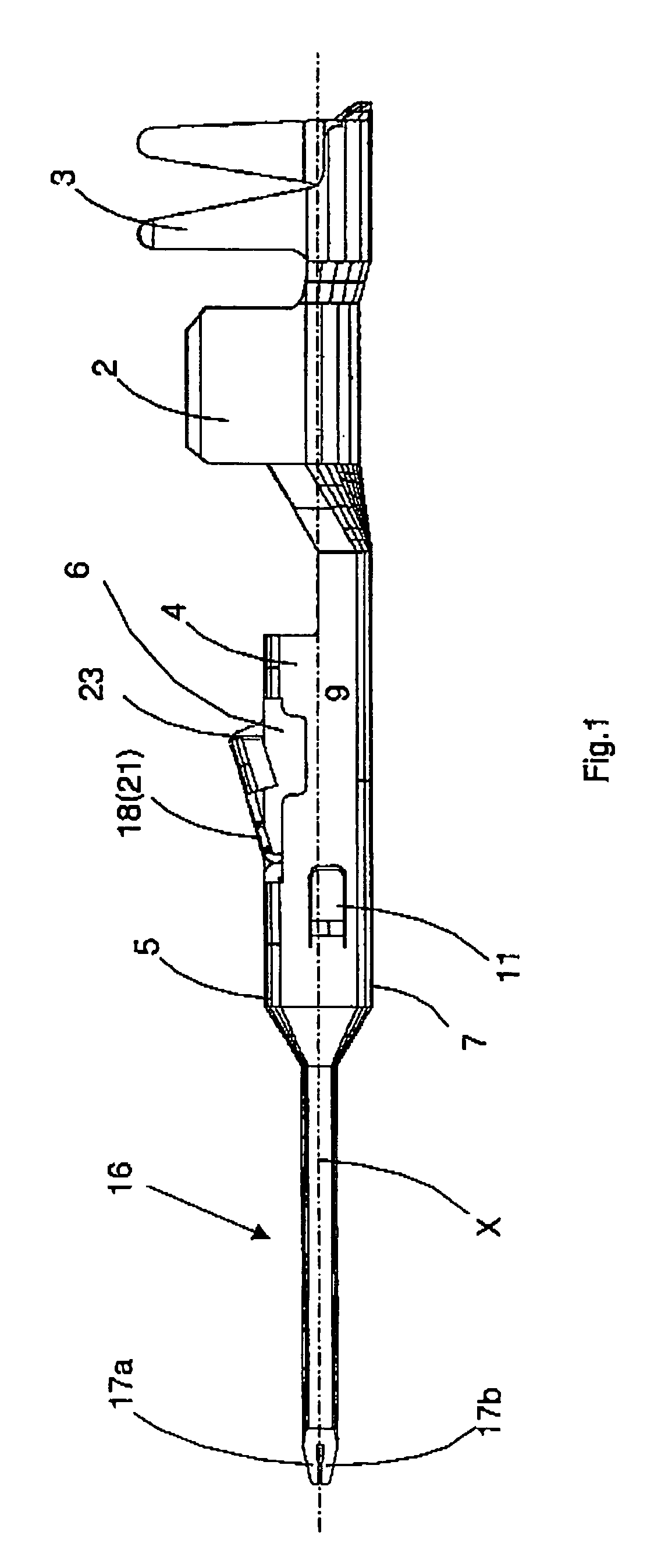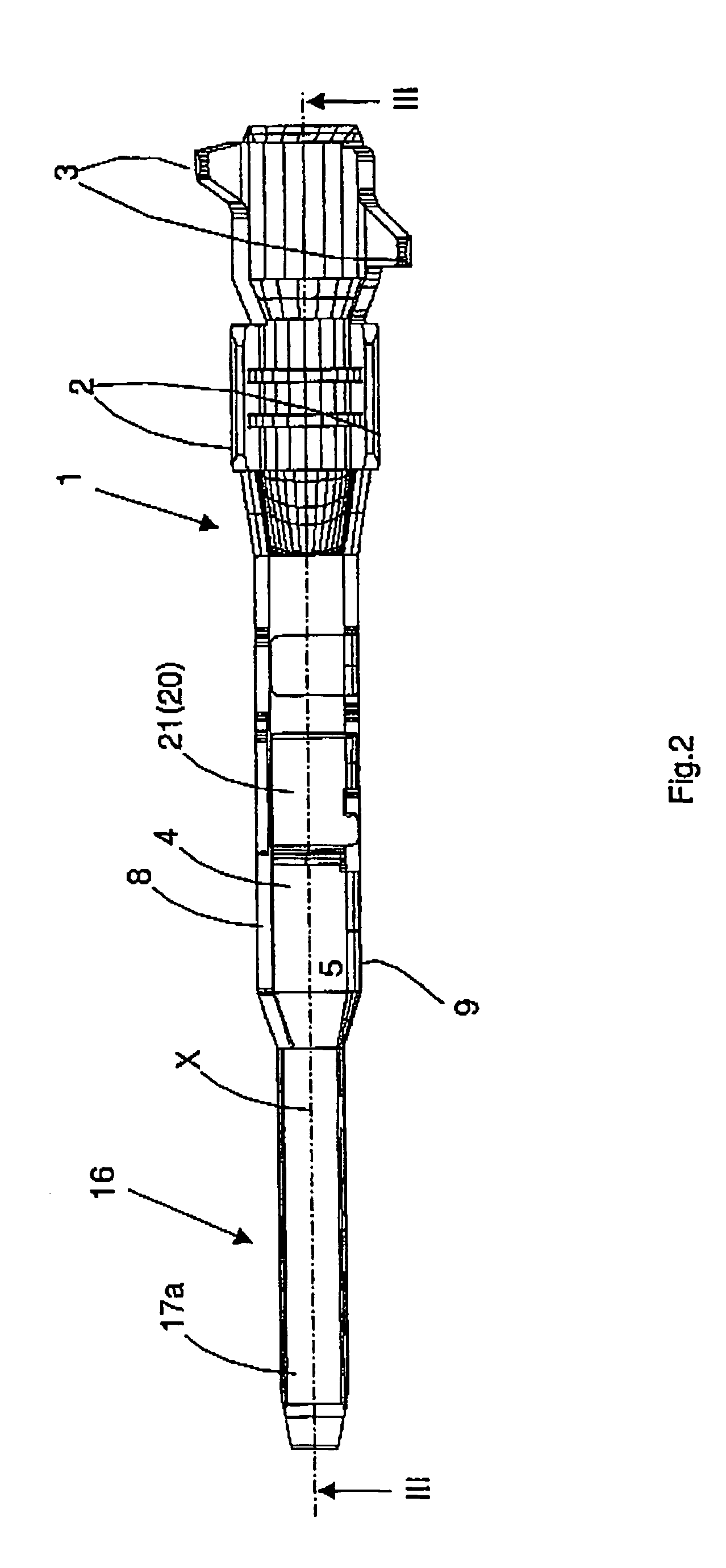Electrical contact element
a contact element and electric technology, applied in the direction of coupling contact parts, fastening/insulating connecting parts, electrical equipment, etc., can solve the problems of reducing unable to achieve the strength of the flat terminal pin in the direction of its free end, etc., and achieve the effect of increasing the stiffness of the retaining elemen
- Summary
- Abstract
- Description
- Claims
- Application Information
AI Technical Summary
Benefits of technology
Problems solved by technology
Method used
Image
Examples
Embodiment Construction
[0036]From FIGS. 1 to 4 an electrical contact element is visible, comprising a base element 1, formed from a copper material, especially a copper sheet by means of punching and bending. The base element 1 comprises a conductor contact portion 2 in form of two tabs and an insulation crimping portion 3, which also comprises two tabs. In this area, the base element 1 has essentially a U-like cross-section, which is especially visible from FIG. 4. In this portion an electrical cable (not shown) is received. More specifically, the two tabs of the conductor contact portion 2 are connected to the conductor of the cable by crimping. The two tabs of the insulation crimping portion 3 are crimped to the insulation of the cable, so that the cable is retained. The two conductor contact portions 2 serve to secure a sufficient electrically conductive contact between the base element 1 of the contact element and the conductor of the cable.
[0037]A base portion 4 follows the conductor contact portion...
PUM
 Login to View More
Login to View More Abstract
Description
Claims
Application Information
 Login to View More
Login to View More - R&D
- Intellectual Property
- Life Sciences
- Materials
- Tech Scout
- Unparalleled Data Quality
- Higher Quality Content
- 60% Fewer Hallucinations
Browse by: Latest US Patents, China's latest patents, Technical Efficacy Thesaurus, Application Domain, Technology Topic, Popular Technical Reports.
© 2025 PatSnap. All rights reserved.Legal|Privacy policy|Modern Slavery Act Transparency Statement|Sitemap|About US| Contact US: help@patsnap.com



